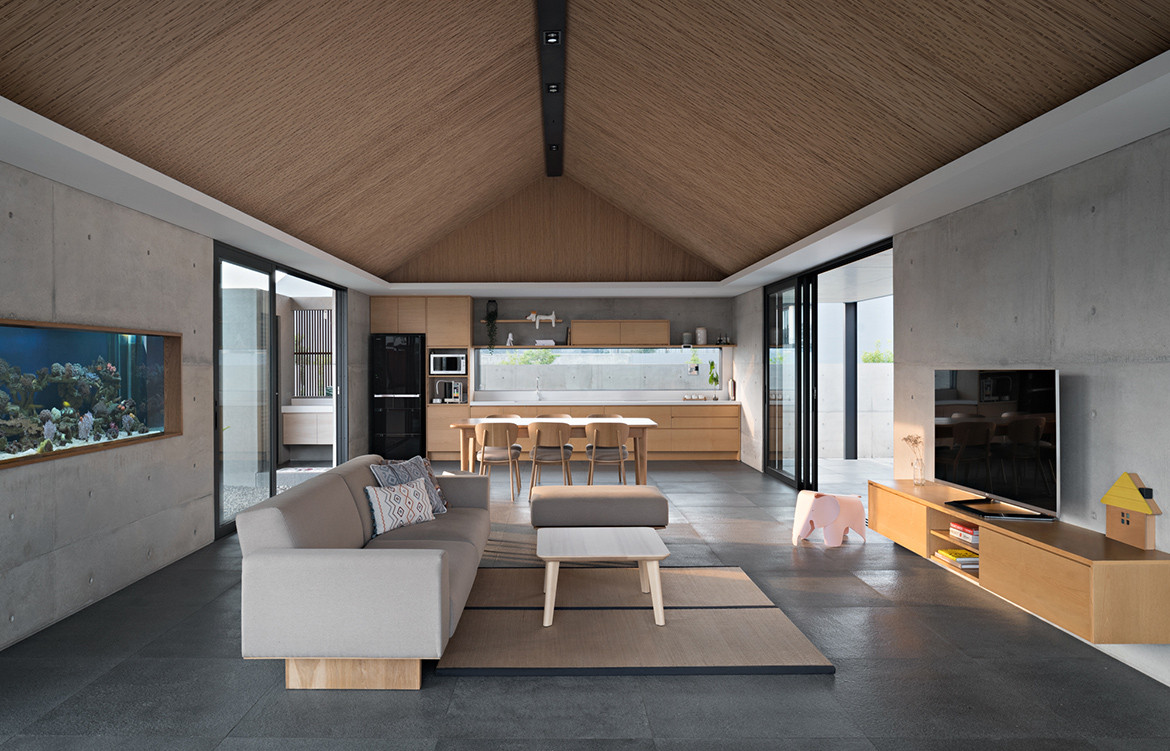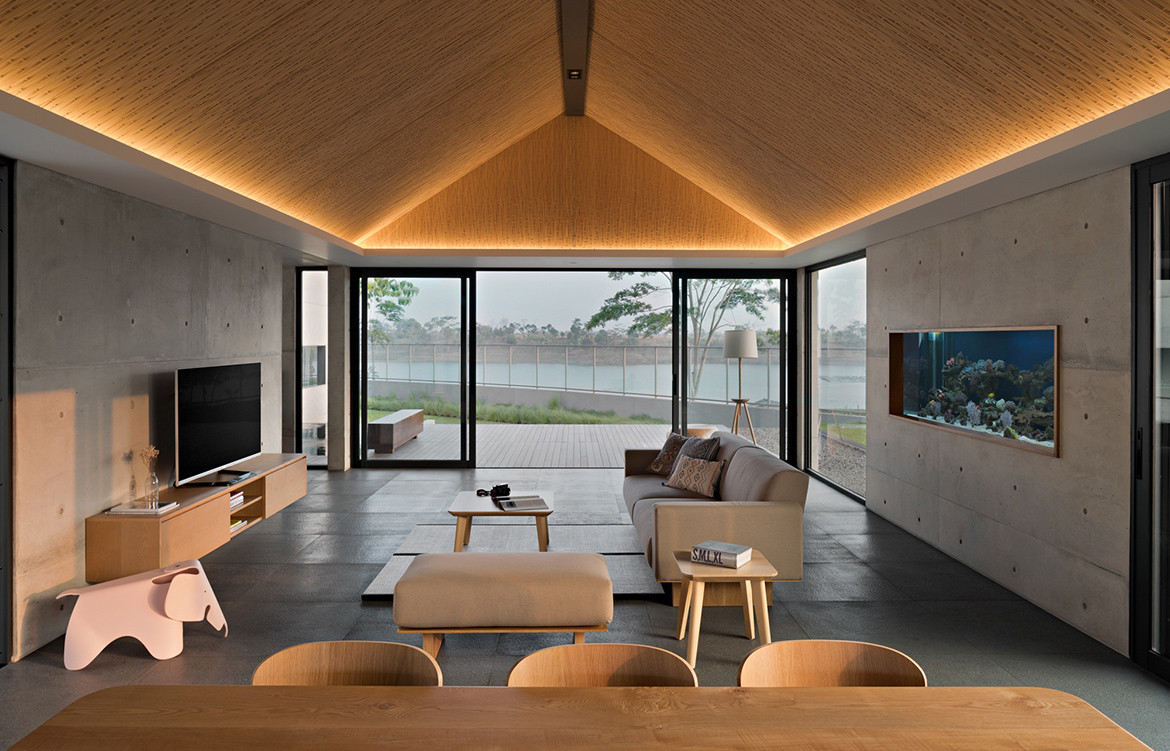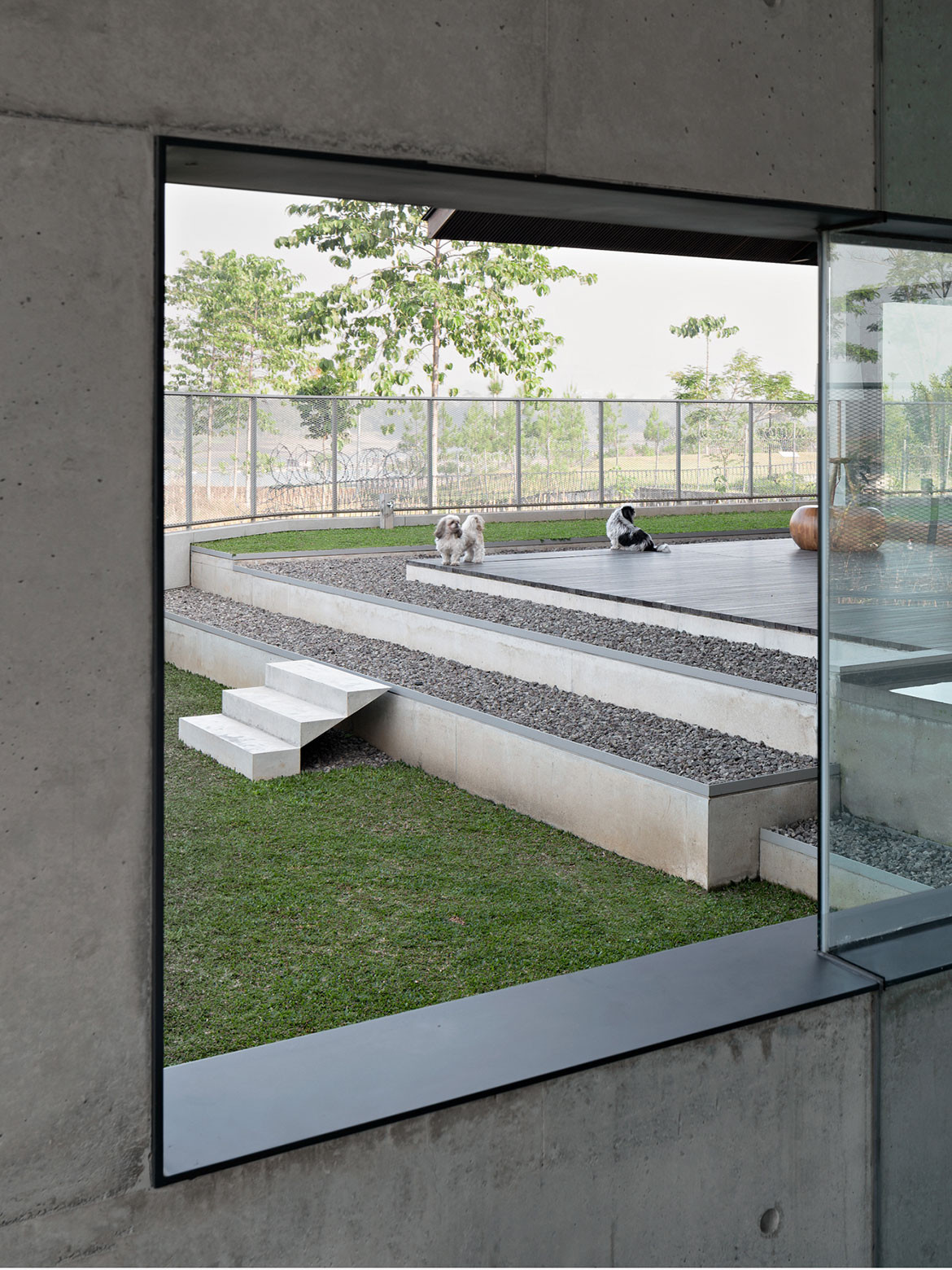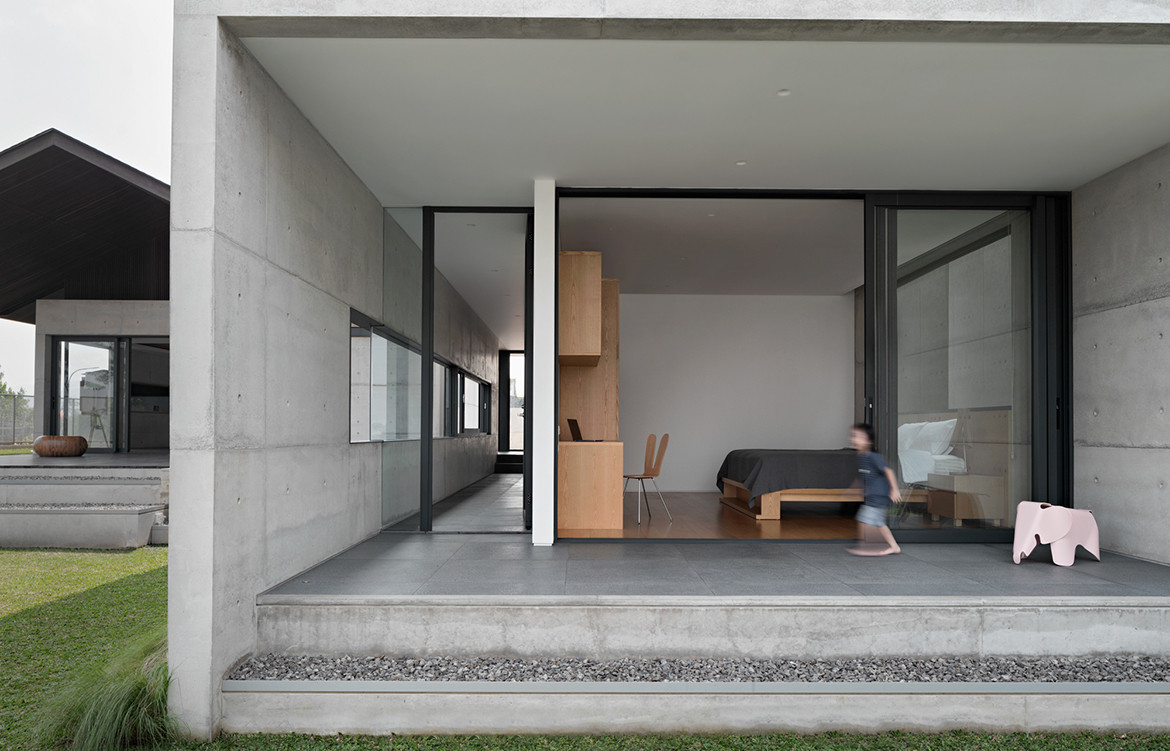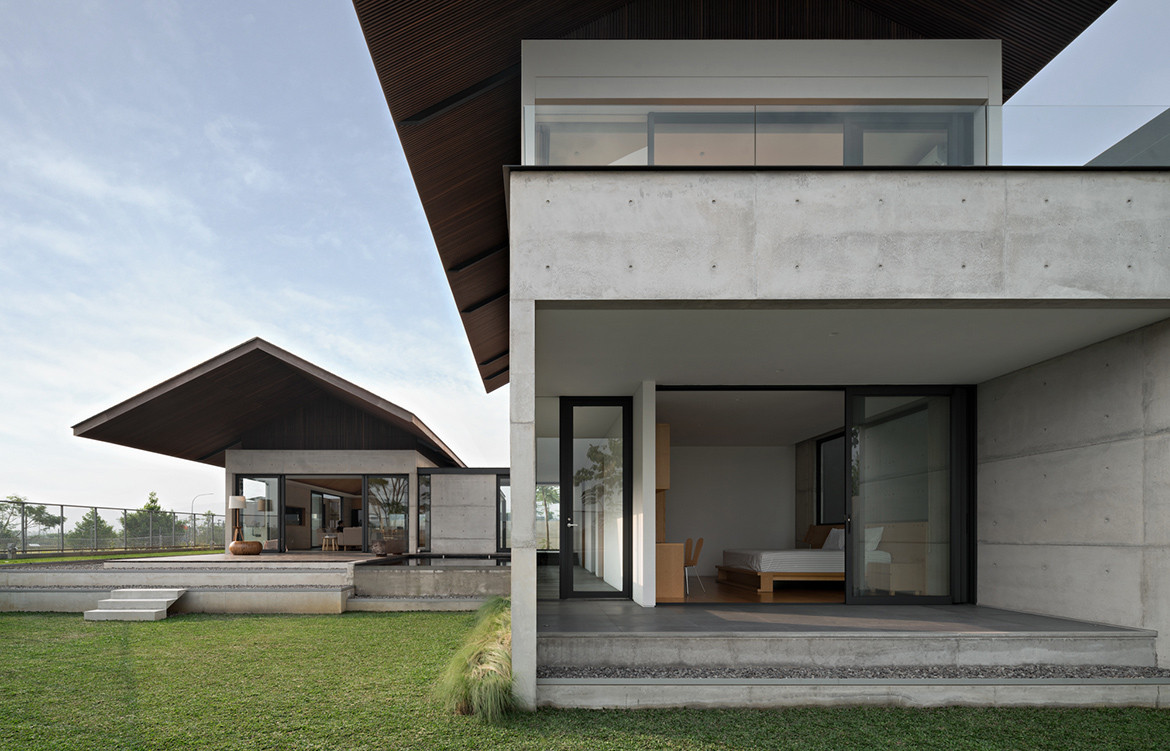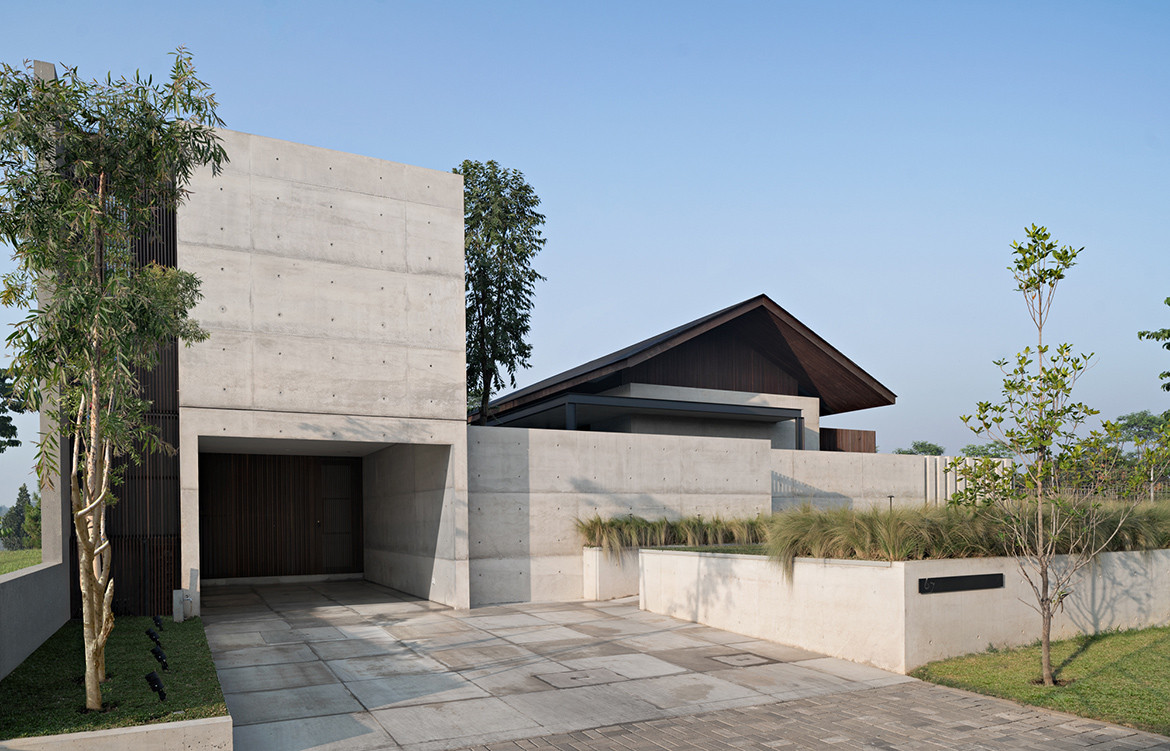Iyashi House encourages its visitors to close their eyes, let go of digital distractions and disregard, if only for a moment, the views of the surrounding landscape and otherwise architectural finesse that characterises the house altogether. In the absence of the visual dimension, one can begin to perceive the emerging sound of silence within the space, complemented by distant undertones of suburban nature.
A soft breeze pulsates through the house, leaving the only tangible demarcation of indoor and outdoor tethered to the material and textural transitions beneath one’s feet. The Japanese word iyashi bears the meaning of healing, rejuvenation, or sense of serenity.
This house is designed as a kind of domestic sanctum, immersed in silence, natural light and picturesque scenery. Iyashi House is a three-bedroom private residence nestled in a serene lakeside suburb of Bandung, Indonesia, conceived as a couple’s retirement home and a place of gathering for their extended family and friends.
Iyashi House is designed as a kind of domestic sanctum, immersed in silence, natural light and picturesque scenery.
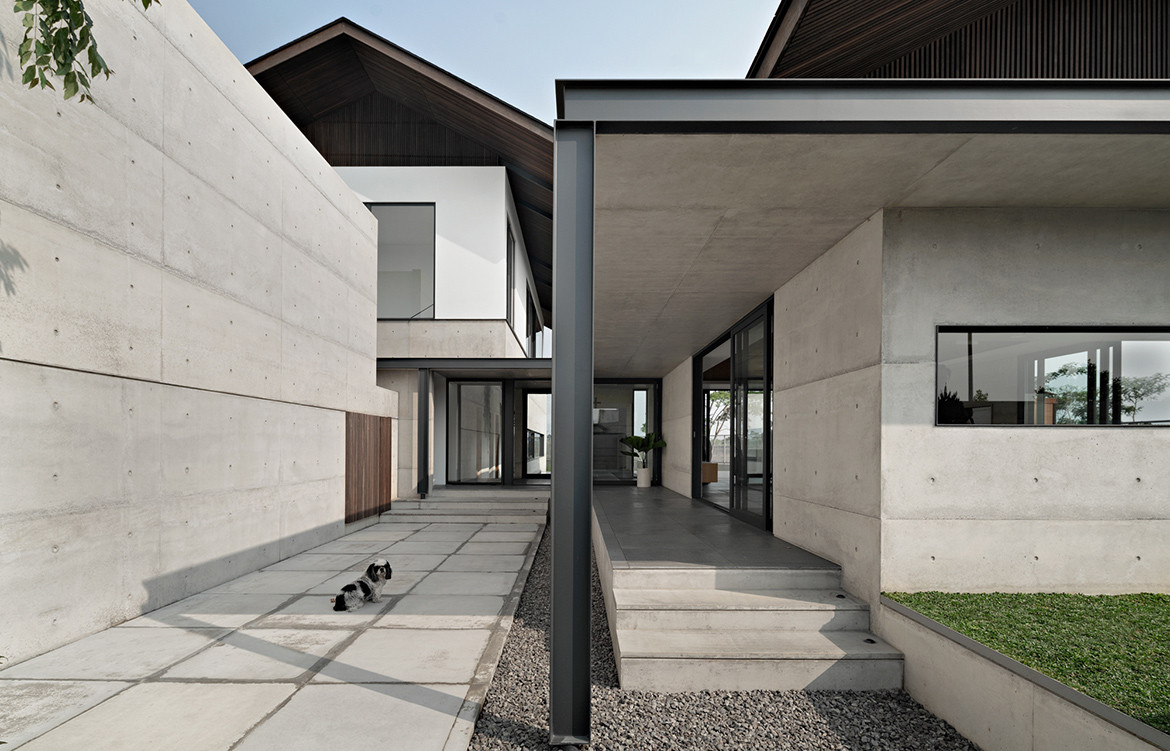

The house is gently concealed by perimeter walls, preceded by a short ascending walkway that is framed by Alang Alang grass. The main entrance walkway leads into an interior courtyard, fitted with bespoke, pre-fabricated concrete tiles and embellished with a single evergreen tree.
The architecture features a sharp juxtaposition of perfectly finished cast-in-situ concrete, matte steel supports and Ironwood roof ceilings. The striking roofs are accentuated by an inward offset from the buildings’ concrete walls and bolstered by a steel structure that enables their ‘semi-floating’ appearance and elongated overhangs.
The overall design is composed of two south facing, interconnected, pitched-roof buildings running parallel to each other and a north-facing, flat-roof, building containing service facilities and an open car garage. The sequence of spaces was environmentally optimised to fit the local Sundanese climate, minimising the need for constant maintenance and costly air conditioning.
The house is gently concealed by perimeter walls, preceded by a short ascending walkway that is framed by Alang Alang grass.

The left building is a double tiered private living quarters consisting of two guest bedrooms with shared bathroom facilities on the ground level and a master bedroom, ensuite bathroom and balcony on the second level. The right building is a single tiered space consisting of an open plan kitchen/dining area and spacious living room that flows into an outdoor terrace and grass lawn. The terrace is crowned with a four meter long, cantilevering overhang that frames the lakeside vista and generates a kind of funneling effect that draws the landscape into the house.
The project’s array of material composition, from Andesite stone tiling to Ulin wood, was carefully chosen and collectively set to age gracefully with hints of natural weathering, marked by the forces of time.
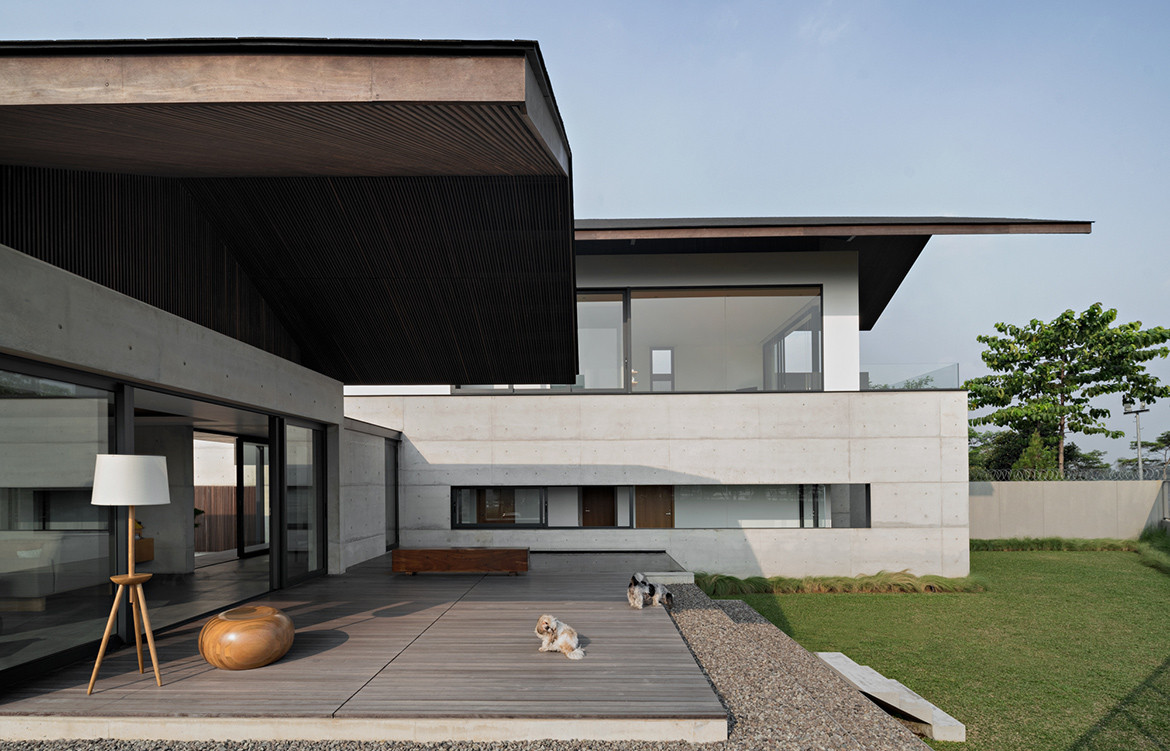
Of all design details and architectural elements conceived in this residence, the terrace is perhaps the architectural protagonist that captures the essence of the house. Thus, the soul lies in the search for a modernised synergy between the indoor and outdoor dimensions of Indonesian tropical living. This notion is further articulated by bespoke handwoven rattan panels spanning across the pitched ceiling of the living and dining area of the house. These natural rattan panels are produced by the Indonesian weaving technology company – BYO Living, committed to bringing the archipelago’s weaving heritage into the regional and international architectural design scene.
Iyashi House attempts to explore, both directly and indirectly, the ways in which a modern Indonesian house can synthesise and reflect upon the nation’s archaic relationship to nature as its source of craft, culture and wellbeing.
Pranala Associates
@pranala.associates
Photography by Mario Wibowo
We think you might also like Red Hill House by Mathieson Architects
